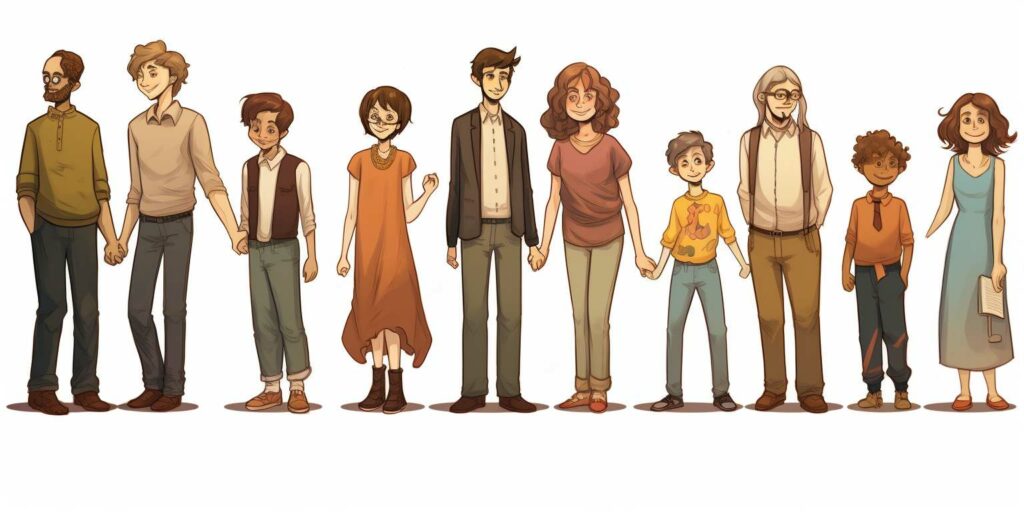Reunification therapy, while not widely known, is a crucial tool in mending strained or broken family relationships. It’s a specialized form of family therapy designed to address and resolve issues that have led to a significant rift between parents and children. These rifts can occur due to many reasons – from parental alienation after divorce to abuse allegations, or even just years of misunderstandings and built-up resentment.
The essence of reunification therapy lies in its aim: rebuilding lost connections. As an experienced therapist, I’ve seen firsthand the transformative power this therapeutic approach can hold when applied correctly. The process doesn’t happen overnight; it’s often long and emotionally draining for all parties involved. Yet seeing families slowly bridge their gaps is an incredibly fulfilling sight.
In providing insight into the world of reunification therapy, I hope you’ll come away with a better understanding of what it entails, why it’s vital in certain situations, and how it might be the key to healing familial wounds. Remember that every situation is unique – one family’s journey may look entirely different than another’s. However, the underlying goal remains constant: mending bonds, fostering understanding, and creating healthier dynamics within families.
Understanding the Concept of Reunification Therapy
Let’s dive right into the heart of reunification therapy. Often, it’s used in a family law context to help repair and re-establish parent-child relationships that have been strained or severed due to high-conflict divorce, separation, or other familial issues. This therapeutic approach is sometimes ordered by a court when there’s evidence that one parent may be alienating the child from the other.
Reunification therapy can feel like navigating through murky waters for many families. The journey begins with an assessment phase where therapists evaluate each family member’s needs and dynamics. Then comes intervention, where tailored strategies are implemented to encourage healthy communication and rebuild estranged relationships.
In most cases, I’ve seen reunification therapy involve both individual and joint sessions. These sessions aim to address underlying issues, foster understanding, and facilitate open dialogue between parents and children.
Here are some key points about reunification therapy:
- It strives to put children’s needs first.
- Its goal is restoring healthy parent-child relationships.
- It often involves both individual and joint counseling sessions.
- In some cases, it may be court-ordered.
Remember though, as with any therapeutic process, success isn’t guaranteed overnight – patience is crucial. In fact, according to a study conducted by Dr. Richard Warshak (2010), successful reunifications can take anywhere from 3 months up to 2 years depending on case complexity.
| Case Complexity | Duration |
|---|---|
| Low | 3 months |
| High | Up to 2 years |
This might seem daunting initially but remember – progress is progress no matter how slow!
I’ll admit though – critics do exist as not everyone believes in its effectiveness due to potential biases present in court-ordered scenarios or the flexibility required from all parties involved. However one thing’s certain: When done correctly under professional guidance? Reunification therapy holds immense potential to heal fractured family bonds and foster healthier relationships for the future.
The Need for Reunification Therapy in Broken Families
Sometimes life’s storms can create chasms between family members. When that happens, it’s reunification therapy that often steps into the breach. This specialized form of therapy aims to bridge the gap and heal the wounds within fractured families, particularly when children are involved.
Let’s take a deeper dive into why this type of therapy is so vital. Research indicates that children who experience high-conflict divorces are more likely to suffer from mental health issues later in life. A study published by the American Academy of Child & Adolescent Psychiatry showed:
| Mental Health Issue | Percentage Increase |
|---|---|
| Anxiety | 49% |
| Depression | 28% |
| Substance Abuse | 33% |
Reunification therapy, then, becomes a critical intervention tool to prevent these long-term effects and help mend torn relationships.
But it’s not just about statistics; real-life stories underscore its importance as well. Take Sarah’s story for instance: she was estranged from her father for over five years following her parents’ bitter divorce. It wasn’t until they both entered reunification therapy that they could rebuild their relationship and move beyond past hurts.
Meanwhile, there are countless other scenarios where this kind of therapeutic intervention can be helpful – such as instances involving parental alienation or when a child has been removed from home due to abuse or neglect.
So here we see it clearly – reunification therapy isn’t just an option; it’s often a necessity in broken families. It offers hope where discord once reigned, offering families the chance to heal and grow together once more.
Process and Techniques Employed in Reunification Therapy
Reunification therapy’s primary aim is to mend strained family relationships, particularly between a parent and child. It’s a type of family therapy that often comes into play after instances of divorce, separation, or custodial disputes.
One technique widely used in reunification therapy is structured interventions. These are deliberate strategies designed to address specific issues within the relationship. They’re predominantly focused on creating safe spaces for open communication and mutual understanding.
- For example, a therapist might facilitate an exercise where the parent and child each share their feelings about a specific event. This allows both parties to understand the other’s perspective better.
- Additionally, these interventions may involve teaching new skills such as conflict resolution strategies or communication techniques.
Another core part of this process focuses on psychoeducation – it’s all about helping parents and children understand each other’s developmental needs. Understanding stages of development can help parents set realistic expectations for their children, which can reduce conflicts significantly.
The use of therapeutic alliance is also pivotal in reunification therapy; it isn’t just about mending the relationship between parent and child but also establishing a trusting relationship with the therapist. The stronger this bond, the more effectively they can guide the family through their healing journey.
Finally, ongoing maintenance is crucial to ensure long-term success. Regular sessions even after significant progress has been made helps keep lines of communication open and tackles any emerging issues promptly before they escalate into larger problems.
In summary,
- Structured Interventions
- Psychoeducation
- Therapeutic Alliance
- Ongoing Maintenance
These are some of the main techniques employed during reunification therapy, designed to foster healthier familial bonds post-separation or traumatic events.
Role of Therapists in Mending Family Bonds
In the realm of reunification therapy, therapists play a pivotal role. They’re not just bystanders or observers, they actively participate in the healing and rebuilding process. Their primary task is to foster communication among family members who’ve been estranged.
My years of experience have shown me that one key responsibility for therapists is to create a safe environment. This space allows all parties involved to openly express their feelings without fear of judgment or retaliation. In this setting, words that were once held back can finally be spoken and more importantly, heard.
Therapists also act as neutral mediators between family members. When tensions run high and emotions flare up, it’s the therapist who steps in to diffuse the situation. By maintaining neutrality, they help keep conversations productive and focused on resolution rather than blame.
Here are some roles a therapist may take on during reunification therapy:
- Mediator: The therapist helps navigate difficult conversations and mediate disputes.
- Educator: They offer strategies for effective communication and conflict resolution.
- Guide: Therapists guide participants through the process of understanding each other’s perspectives.
- Supporter: They provide emotional support to each member throughout the course of therapy.
It’s important to note that these roles aren’t static; they evolve based on what’s needed at any given moment during therapy. A skilled therapist must be flexible enough to adapt their approach depending on how sessions progress.
Another critical aspect is assessing readiness for change among family members involved. I’ve seen cases where one party was eager for reconciliation while another was hesitant or resistant. It’s here that therapists’ expertise comes into play – determining if everyone is ready both emotionally and mentally for reunification.
Lastly, let’s remember that these professionals don’t work miracles overnight; mending broken bonds takes time and patience from everyone involved – including the therapist themselves! But with consistency and determination, successful reunification therapy can indeed help families reconnect in meaningful ways.
Case Studies: Successful Outcomes with Reunification Therapy
Perhaps you’re wondering about the real-life effectiveness of reunification therapy. Well, let me assure you, I’ve seen some astounding successes in my time. Let’s delve into a couple of case studies that highlight just how powerful this therapeutic approach can be.
Let’s start with the story of Rachel and her two children. After several years of animosity resulting from a contentious divorce, both kids had developed an intense hostility towards their mother. They refused to communicate with her or even acknowledge her presence during visits. Enter reunification therapy. Over a period of six months filled with intensive sessions and mediated interactions, there was a significant turnaround in their relationship dynamic.
- Pre-therapy: No communication between Rachel and her children
- Post-therapy: Regular weekly visits and open channels of communication
Another heartening example is that of Greg, who hadn’t spoken to his father since his early teens due to allegations against his dad. It was not until adulthood that Greg decided he wanted to reconnect but didn’t know where or how to begin. That’s where reunification therapy stepped in and guided them through the process.
- Pre-therapy: 10 years of no contact between Greg and his father
- Post-therapy: Reestablished connection leading to monthly dinners
These are just two instances showcasing successful outcomes using reunification therapy – every situation is unique, each journey different yet hopeful.
I should point out though – while these stories do end on positive notes, it wasn’t always smooth sailing throughout the process; there were moments of frustration, setbacks even – which is normal when dealing with such deep-seated issues. But remember – progress may be slow but it’s steady when navigated carefully under professional guidance.
So whether it’s bridging a gap after many silent years or mending relationships strained by past mistakes – these cases demonstrate how effective reunification therapy can be in healing familial rifts. The path to restoration may not always be easy, but as these stories show, it’s definitely possible.
Potential Challenges During the Treatment Process
Embarking on reunification therapy can be a road fraught with several hurdles. It’s important for me to clarify that the journey isn’t always smooth sailing. That said, let’s delve into some obstacles you might encounter along the way.
One significant challenge is resistance from the child or adolescent involved in therapy. They may harbor resentment, fear, or mistrust towards the estranged parent which makes participation in sessions difficult. Remember, it takes time for these feelings to change and patience is vital during this process.
Another hurdle could be lack of cooperation from one or both parents. Yes, sometimes parental conflict continues even within the safe space of therapy. Such ongoing animosity can undermine the therapist’s efforts and impede progress towards reunification.
Additionally, there could be legal complications that arise during treatment—issues related to custody agreements or court orders may interfere with therapy schedules and goals.
Let me also mention how crucial it is for therapists to maintain neutrality throughout this process—yet another challenge they face! Balancing empathy while avoiding taking sides requires skill and tact—a quality intrinsic to seasoned professionals working in this field.
Here are some potential challenges summarized:
- Resistance from children
- Lack of cooperation from parents
- Legal interruptions
- Therapist maintaining neutrality
These stumbling blocks shouldn’t discourage those considering reunification therapy; rather they serve as reminders of what might lie ahead on this path toward healing and reconciliation.
Reunification Therapy: Critiques and Counterarguments
While it’s undeniable that reunification therapy can serve as a valuable tool in mending strained parent-child relationships, it’s not without its critics. Some professionals question the efficacy of this type of therapy, pointing to a lack of empirical evidence supporting its success. They believe that more research is needed before we can definitively say whether or not reunification therapy truly aids in resolving high-conflict custody disputes.
There are also ethical concerns surrounding this form of therapy. Critics argue that forcing a child into reunification therapy with an estranged parent—especially if there’s been a history of abuse or neglect—can potentially re-traumatize them. In such cases, they suggest alternatives like individual and family counseling, which might be better equipped to address these complex issues.
Notably, some parents have voiced their opposition to court-ordered reunification therapy. They claim that it infringes on their rights to make decisions for their children and may inadvertently favor one parent over the other. These parents often express frustration at feeling powerless in the process.
Moreover, certain legal experts have pointed out potential flaws within the system itself. They note how difficult it can be for courts to determine when reunification therapy is appropriate and worry about instances where it might be used manipulatively during custody battles.
Lastly, there are those who criticize the cost associated with reunification therapy. Given that sessions can run into hundreds of dollars per hour—with fees often split between the parents—it’s clear this form of therapeutic intervention isn’t accessible to everyone. Critics argue that solutions need to be found so all families could benefit from such services regardless of their financial circumstances.
Despite these criticisms and counterarguments, many mental health professionals still advocate for the use of reunification therapy under certain circumstances. They stress its importance as part of an overall strategy aimed at repairing damaged family bonds.
Conclusion: The Impact of Reunification Therapy on Family Healing
Reflecting on what we’ve covered, I can confidently say that reunification therapy plays an instrumental role in family healing. It’s not just about mending relationships; it goes beyond that to facilitate emotional connections and foster understanding among family members.
The beauty of this therapy lies in its holistic approach. It doesn’t merely patch up the visible cracks but delves deep into the root causes of family discord. By addressing these underlying issues, it paves the way for lasting change and fosters healthy relationships.
Now, let’s take a moment to appreciate some key benefits:
- Enhanced Communication: Reunification therapy promotes open dialogue among family members, encouraging them to express their feelings without fear or judgment.
- Improved Understanding: Through various therapeutic techniques, each party gains more insight into others’ perspectives leading to better empathy.
- Strengthened Bonds: As communication improves and understanding deepens, stronger familial bonds are forged.
It’s also important to remember that every family is unique. What works for one might not necessarily work for another. This is why reunification therapy needs to be tailored according to specific circumstances and individual needs.
There are no shortcuts when it comes down to rebuilding trust and fostering love within a family setup. But with patience, effort, and time – healing is possible under reunification therapy’s guidance.
I’ll leave you with this thought: families are complex entities filled with love yet riddled by occasional misunderstandings. However difficult the journey may seem now, know that there’s light at the end of the tunnel. And often times than not – reunification therapy could be that guiding light towards achieving harmony within your household again.



